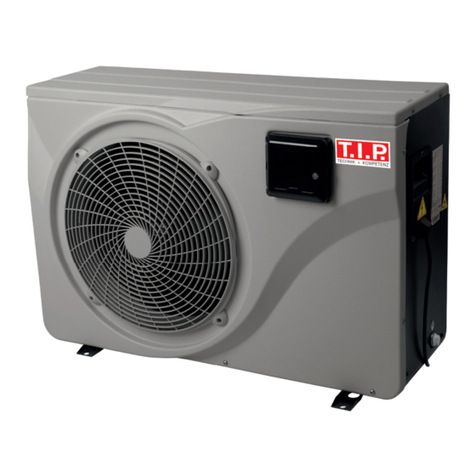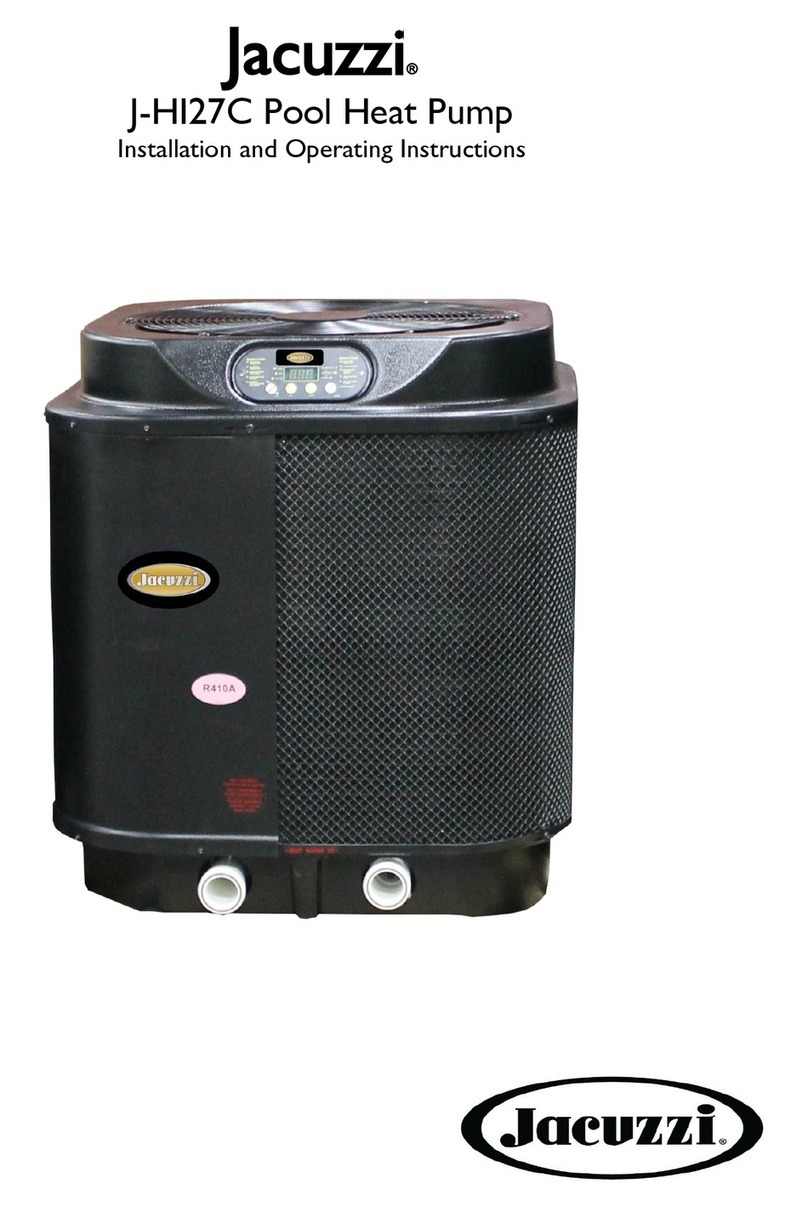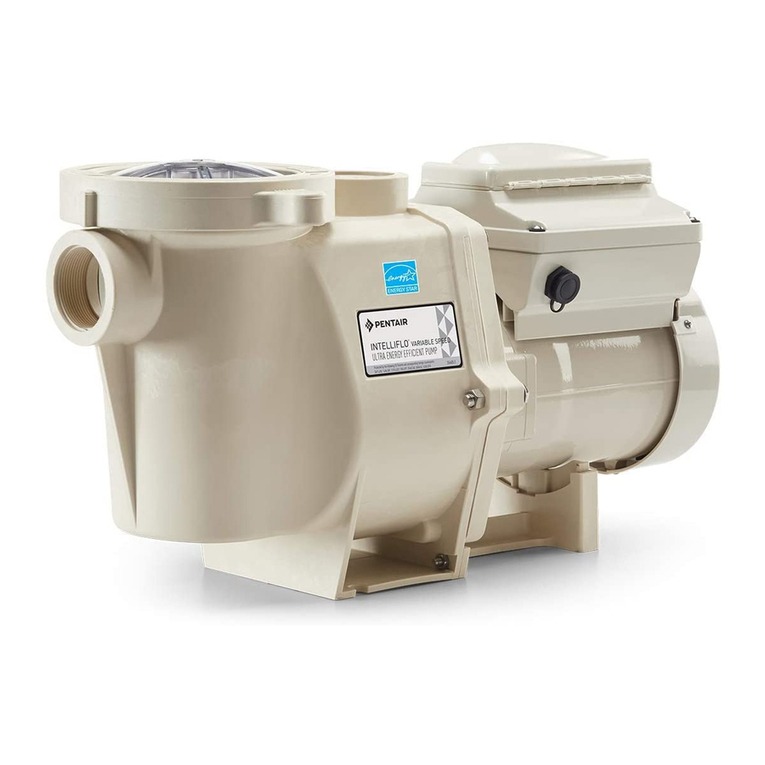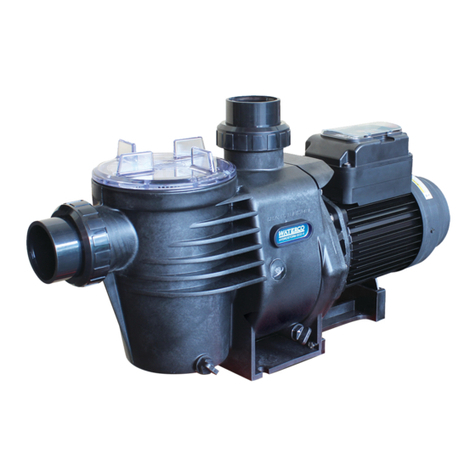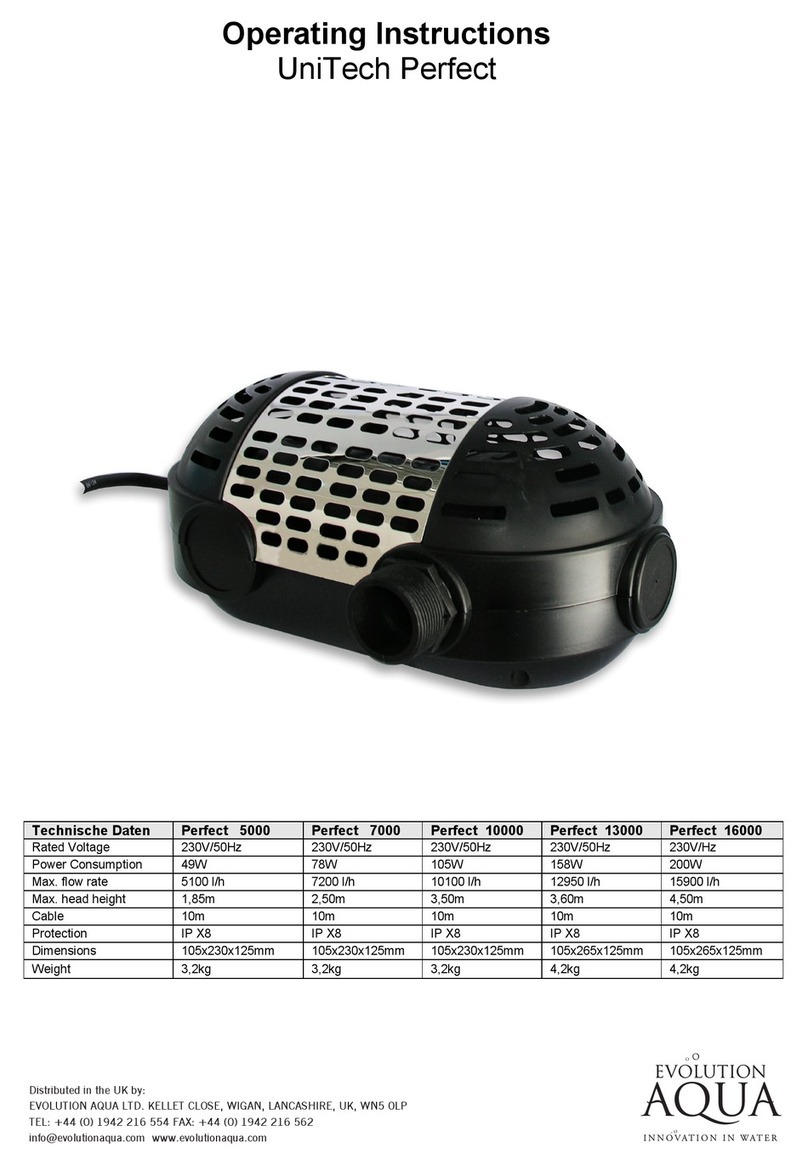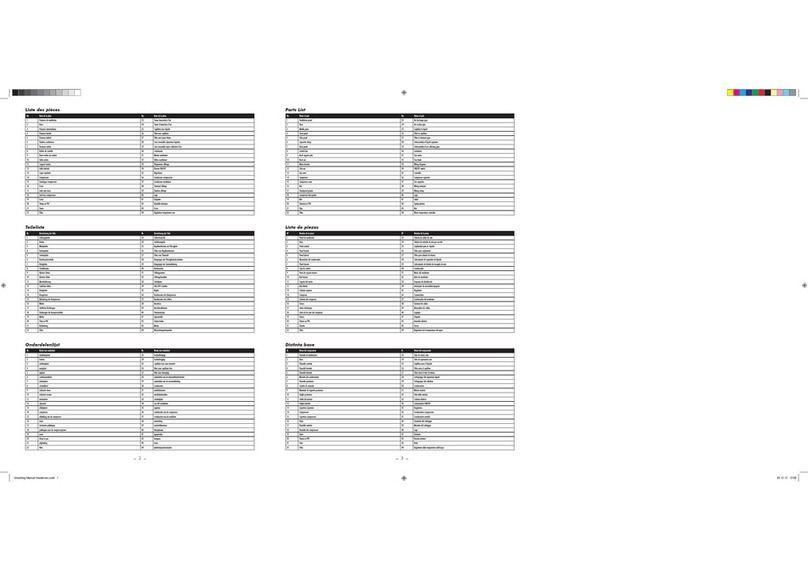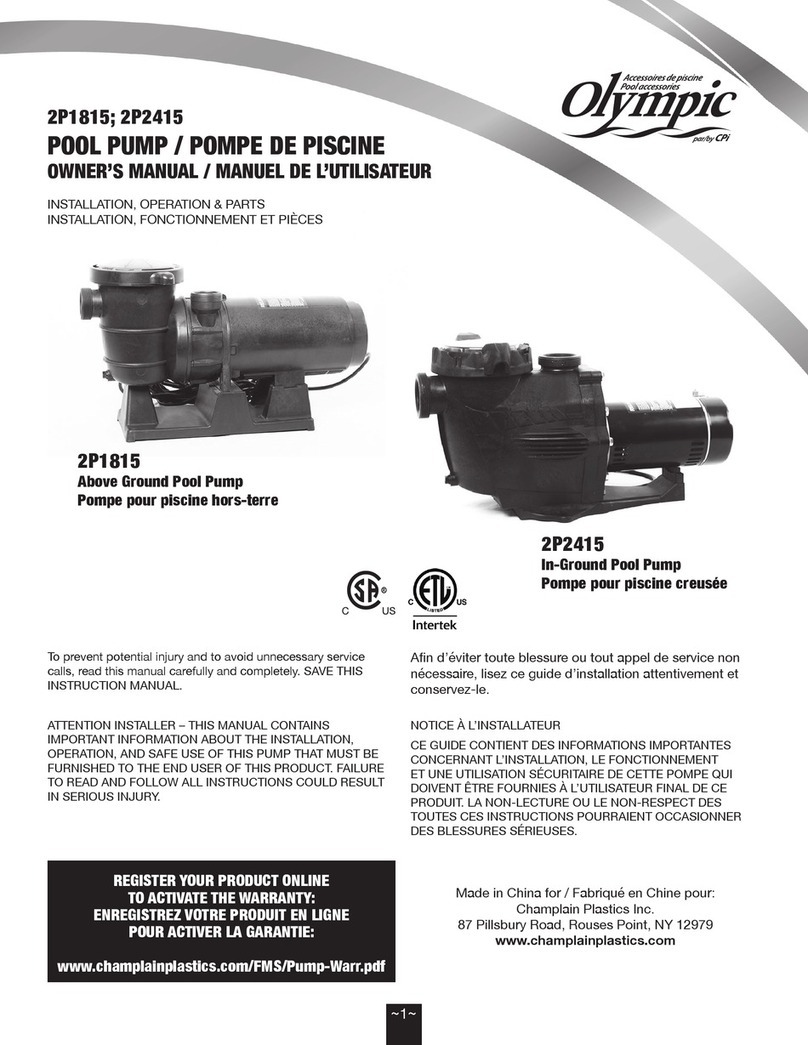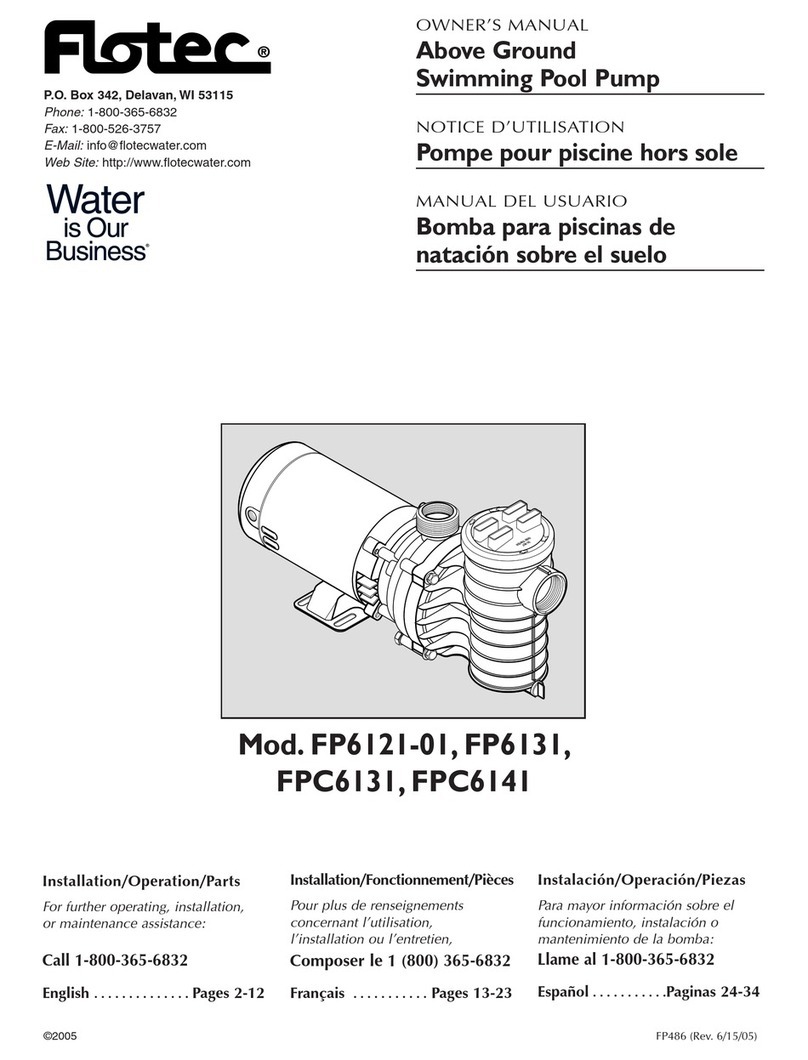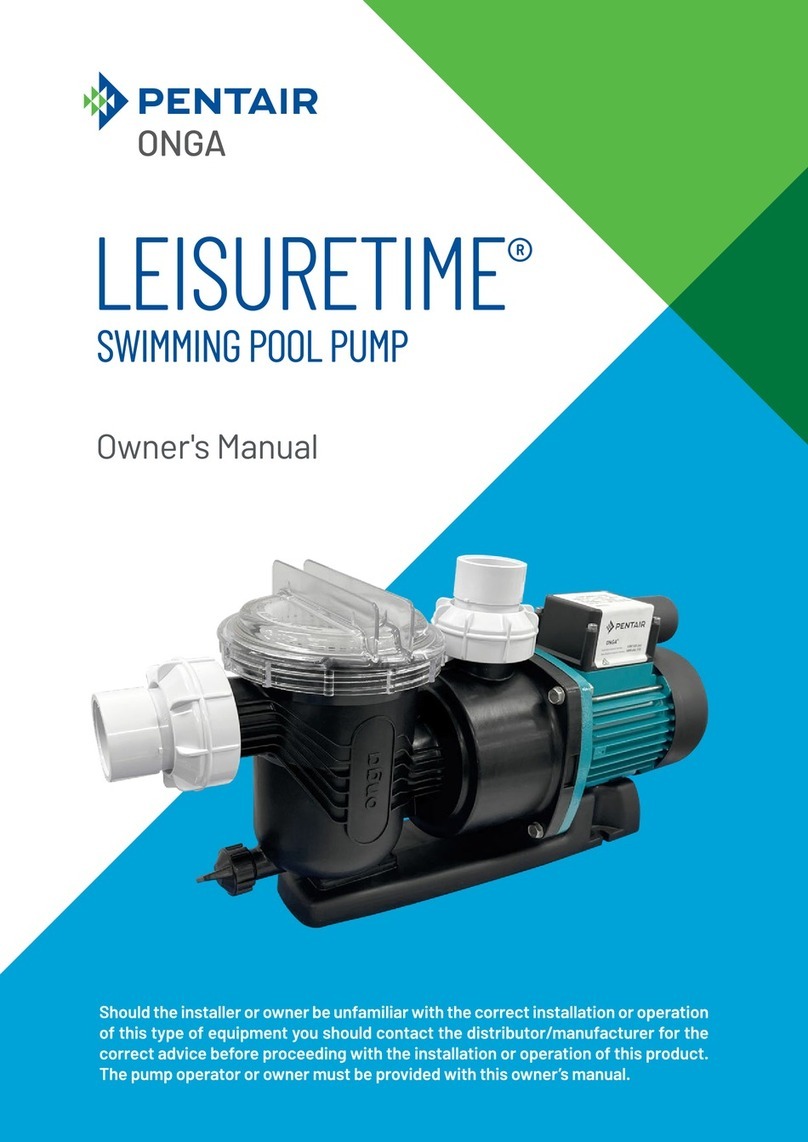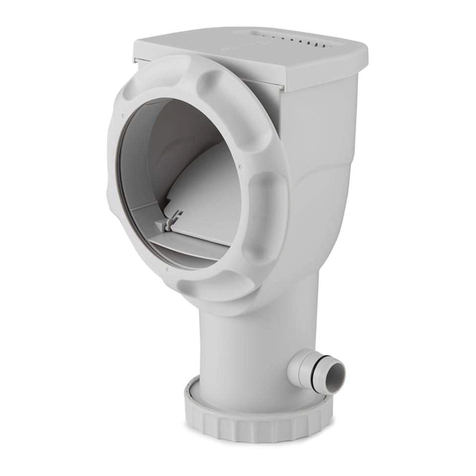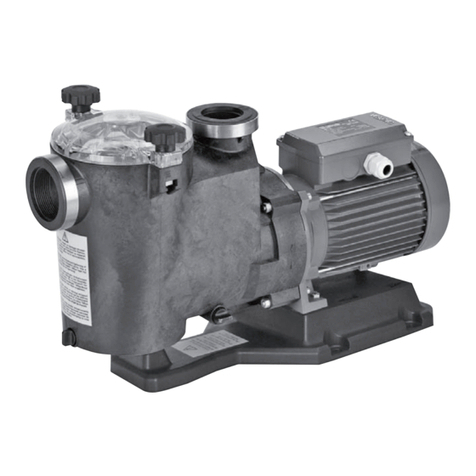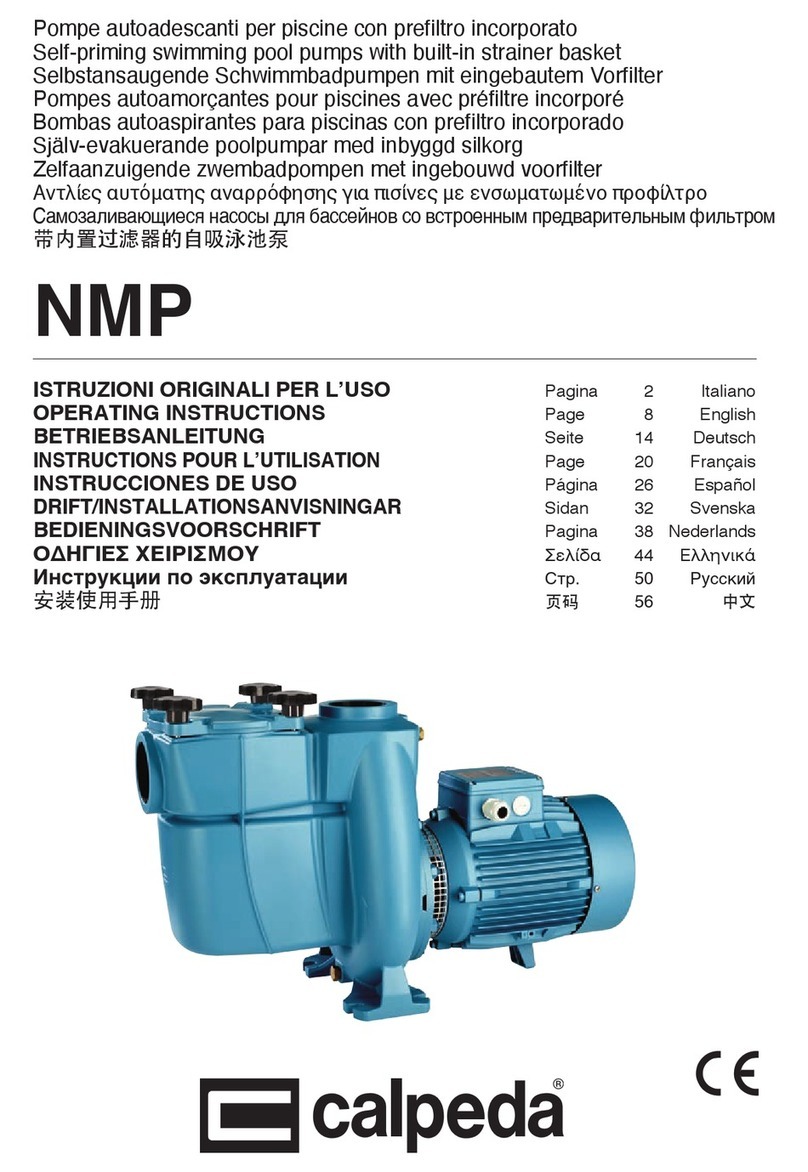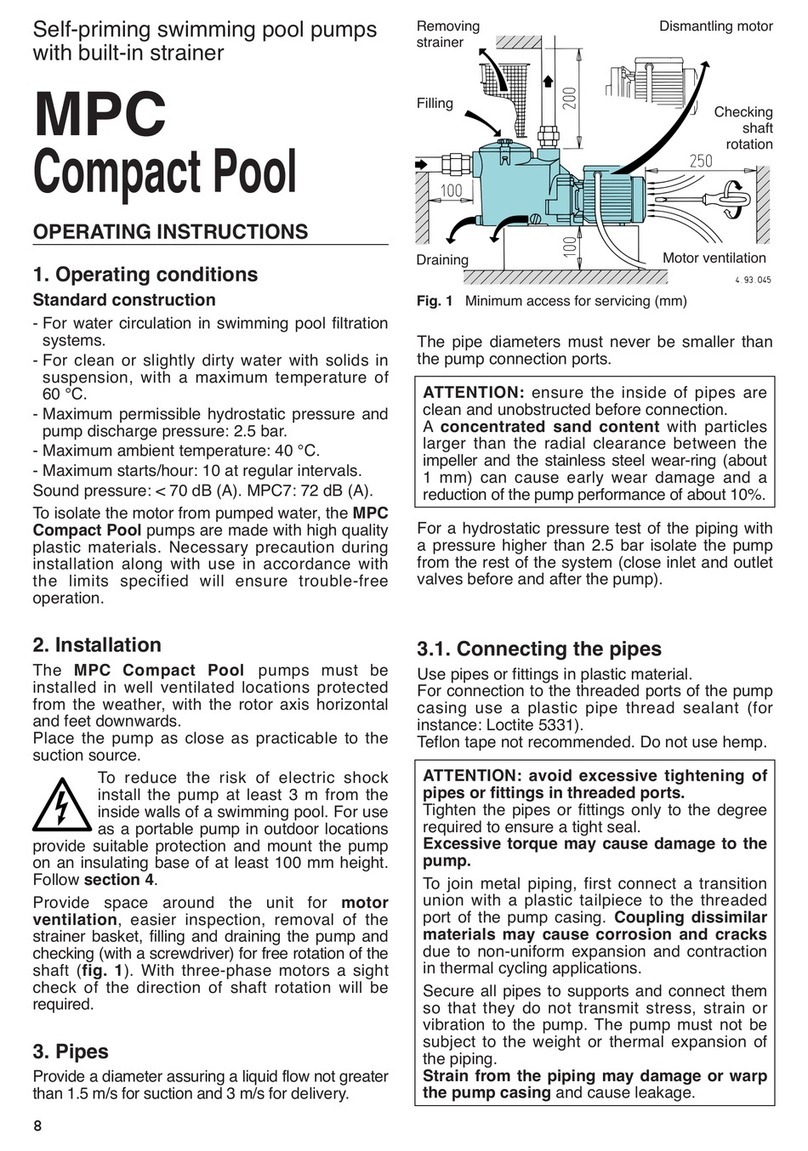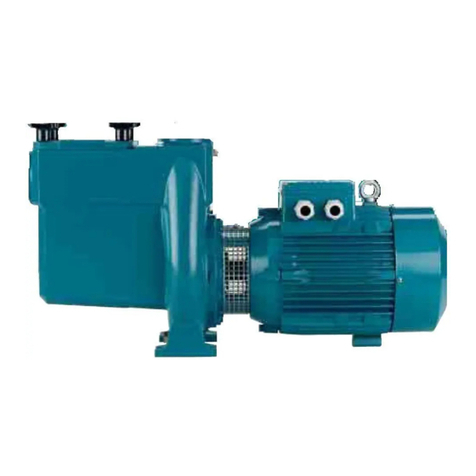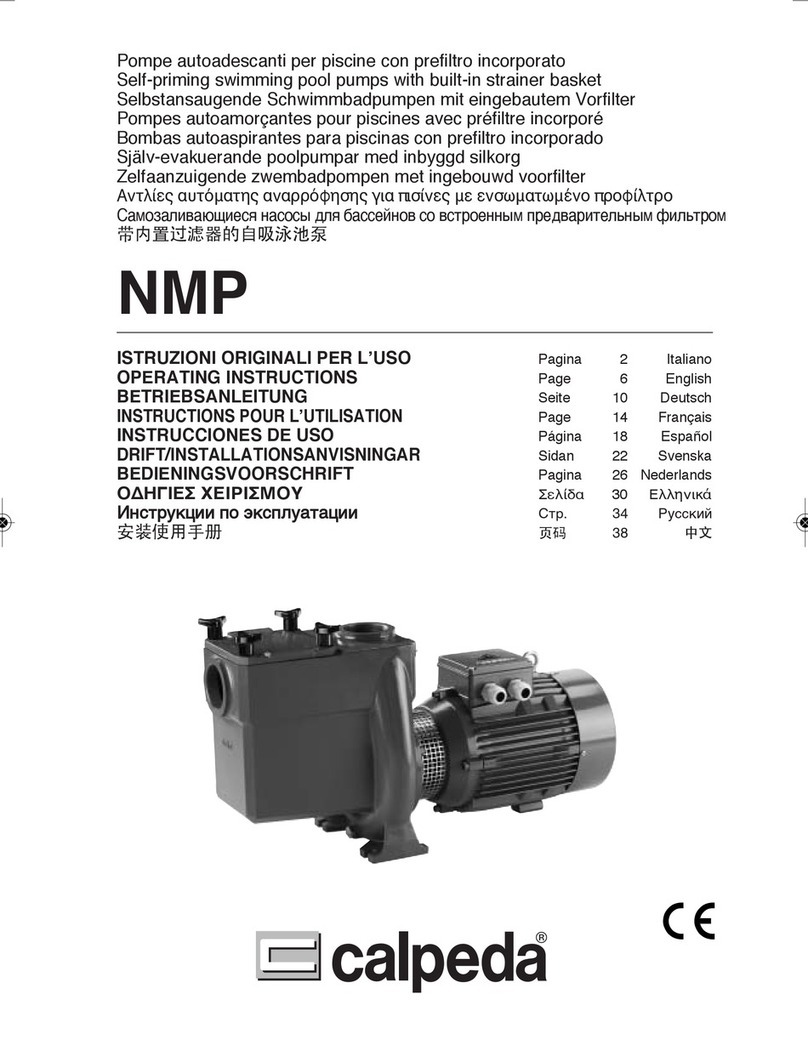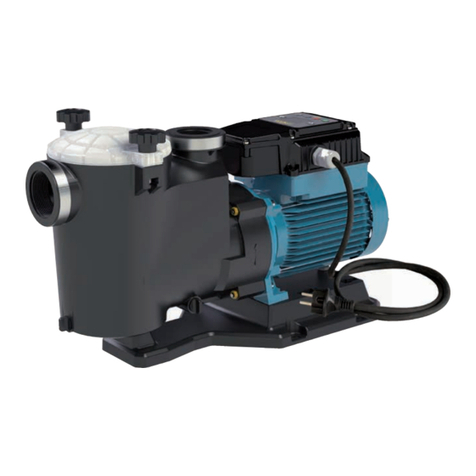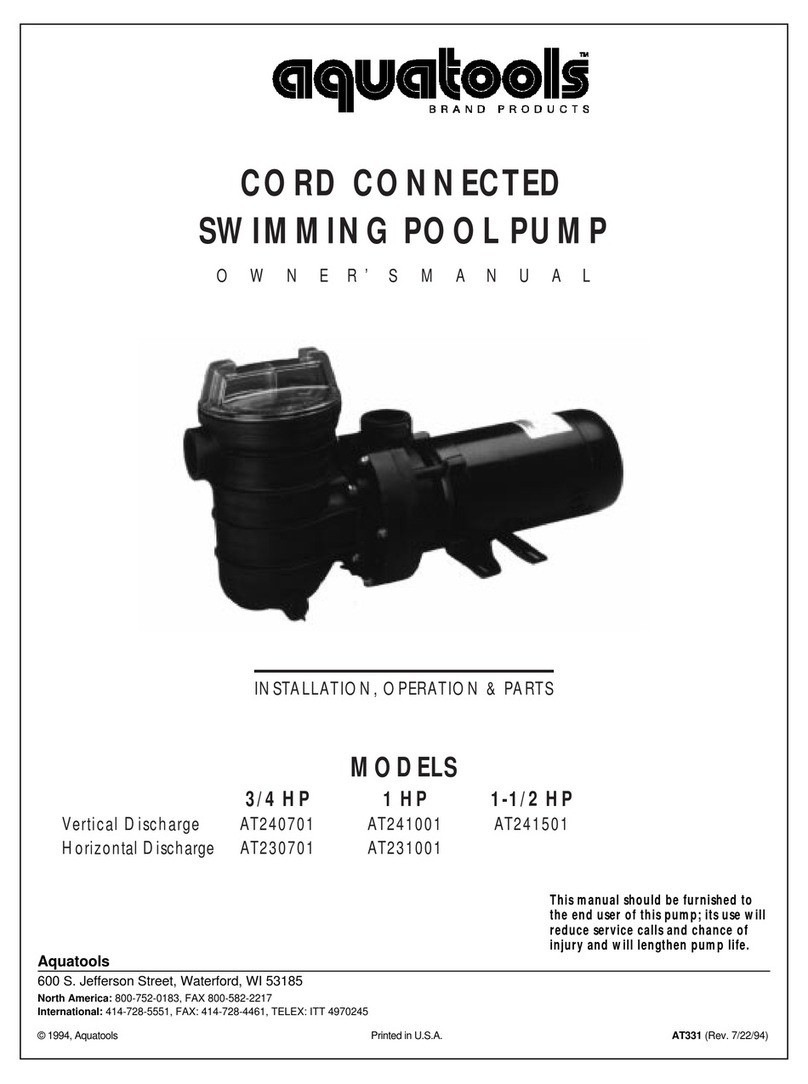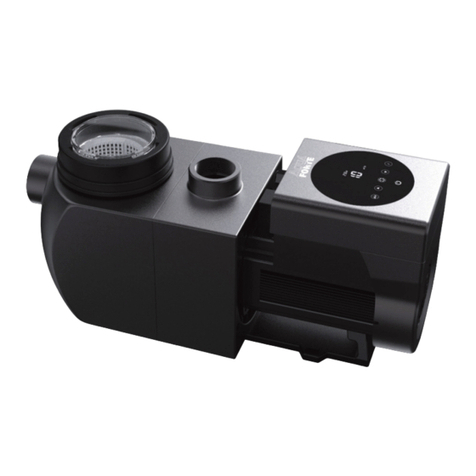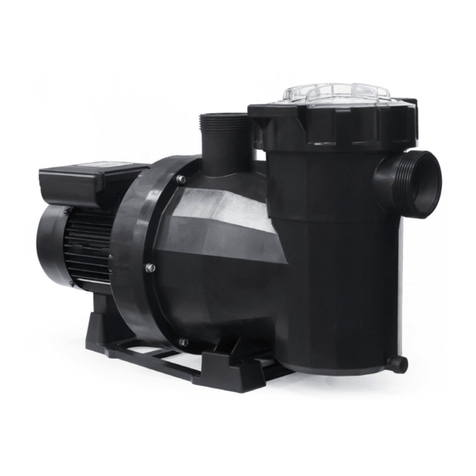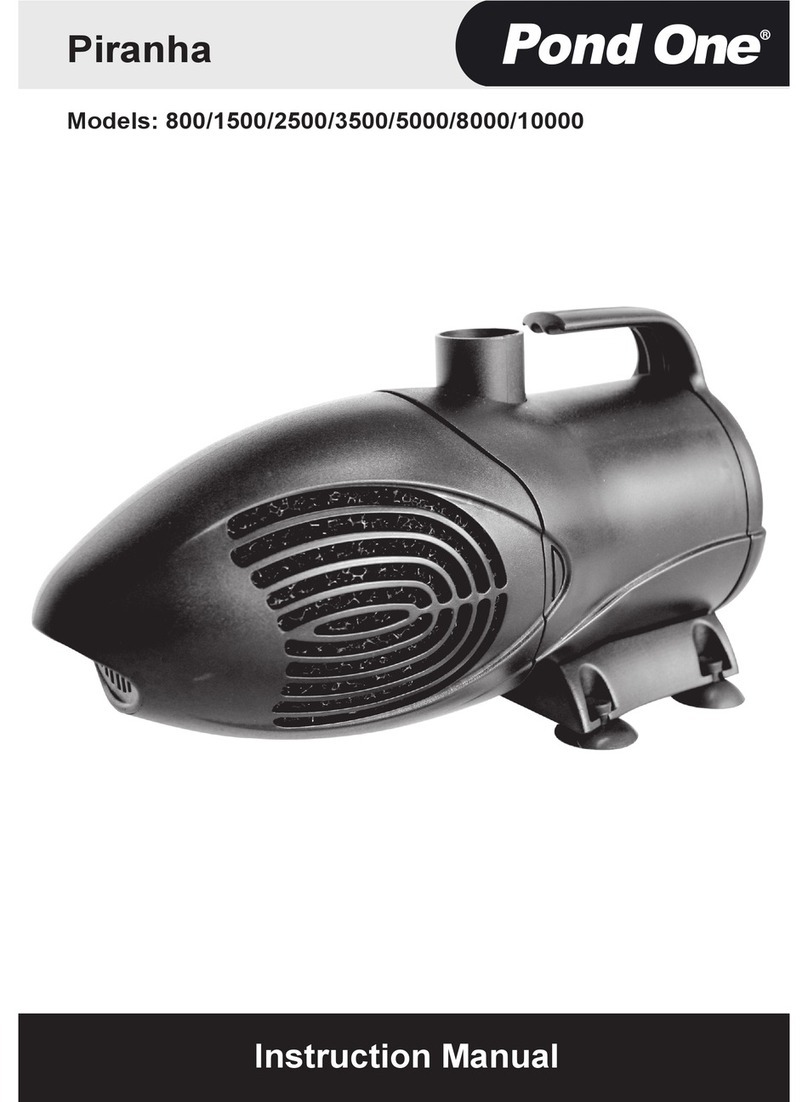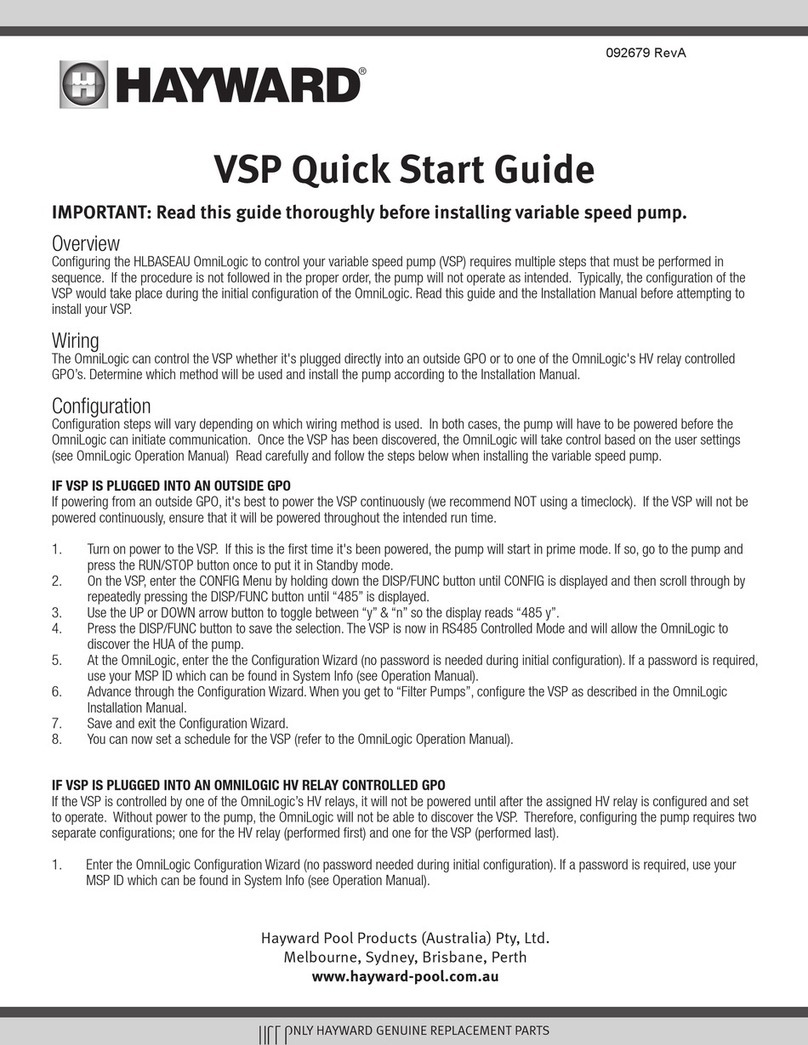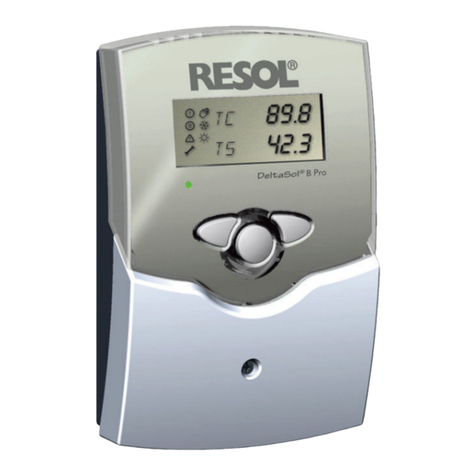
IT
MPC Rev20 - Istruzioni originali Pagina 5 / 80
ATTENZIONE: prima di collegare le tubazioni
assicurarsi della loro pulizia interna.
Una quantità concentrata di sabbia con una
granulometria maggiore del gioco radiale tra girante
ed anello di tenuta in acciaio inossidabile (circa 1 mm)
può causare una precoce usura ed una diminuzione
delle prestazioni della pompa di circa il 10%.
Nel caso di prova di tenuta delle tubazioni ad una
pressione superiore a 2,5 bar escludere la pompa
(chiudere le saracinesche prima e dopo la pompa).
6.4.2. Collegamento dei tubi
Impiegare tubi o raccordi di materiale plastico. Per
il collegamento alle bocche lettate della pompa
usare un sigillante per lettature su materiali plastici
(esempio: Loctite 5331).
Il nastro Teon non é raccomandato. Non usare
canapa.
ATTENZIONE: evitare un serraggio eccessivo di
tubi o raccordi nelle bocche lettate. Serrare i tubi
o i raccordi solo quanto basta per assicurare la tenuta.
Un serraggio eccessivo può danneggiare la
pompa.
Nel caso di collegamento di un tubo metallico applicare
alla bocca della pompa un raccordo a bocchettone di
materiale plastico. La giunzione di materiali dissimili
può causare corrosione o rotture per espansioni e
contrazioni termiche non uniformi.
Ancorare le tubazioni su propri appoggi e collegarle in
modo che non trasmettano forze, tensioni e vibrazioni
alla pompa. Il loro peso e le loro dilatazioni termiche
non devono gravare sulla pompa.
Il collegamento in tensione delle tubazioni può
causare rotture o deformazioni del corpo pompa con
perdita della tenuta.
6.4.3. Tubazione aspirante
La tubazione aspirante deve essere a perfetta tenuta
contro l’entrata d’aria.
Nelle installazioni sse con la pompa sotto il livello
dell’acqua (funzionamento sotto battente) (capitolo
13., g. 7) inserire una saracinesca nella condotta di
arrivo ed una nella tubazione di mandata per isolare la
pompa dall’impianto.
Nelle installazioni sse con la pompa sopra il livello
dell’acqua (funzionamento in aspirazione), con più
tubi aspiranti (per skimmers, scarico di fondo, attacco
per pulitore del fondo) collegare ad un collettore tutti i
tubi con una propria saracinesca. Per quanto possibile
disporre i tubi ed il collettore sotto il livello dell’acqua
e raggiungere la pompa con un solo tubo verticale
(vedere capitolo 13., gura 8b e capitolo 7.2.3.).
Nelle installazioni sse per piscine evitare altezze di
aspirazione superiori a 3 m rispetto allo scarico dal
fondo. Con altezze di aspirazione superiori a 1,5 m
inserire una valvola di non ritorno (accessibile) nel
tubo di aspirazione dal fondo.
Negli impieghi con tubi essibili montare in
aspirazione un tubo essibile con spirale di rinforzo
per evitare restringimenti dovuti alla depressione in
aspirazione.
6.4.4. Tubazione di mandata
Nella tubazione di mandata installare una saracinesca
per regolare portata e prevalenza.
Installare un indicatore di pressione (manometro).
6.5. Collegamento elettrico
OFF
Il collegamento elettrico deve essere eseguito
da un elettricista qualicato nel rispetto delle
prescrizioni locali.
Seguire le norme di sicurezza.
Eseguire il collegamento a terra. Collegare il
conduttore di protezione al morsetto contrassegnato
con il simbolo .
Confrontare la frequenza e la tensione di rete con i
dati di targa e collegare i conduttori di alimentazione
ai morsetti secondo il corrispondente schema riportato
all’interno del coperchio della scatola morsetti.
ATTENZIONE: non fare mai cadere una
rondella o altre parti metalliche nel
passaggio cavi interno tra scatola morsetti
e statore. Se accade, smontare il motore e
recuperare la parte caduta.
Se la scatola morsetti è munita di pressacavo usare
un cavo di alimentazione essibile tipo H07 RN-F
con
sezione del cavo pari o superiore (cap. 16 TAB 1)
.
Schema elettrico
(cap. 17)
.
Se la scatola morsetti è munita di anello di tenuta
effettuare il collegamento attraverso tubo.
Per l’uso in una piscina, vasche da giardino o posti
similari, nel circuito di alimentazione deve essere
installato un interruttore differenziale con una
corrente residua (IΔN) ≤ 30 mA.
Installare un dispositivo per la onnipolare
disinserzione dalla rete (interruttore per scollegare
la pompa dall’alimentazione) con una distanza di
apertura dei contatti di almeno 3 mm.
Con alimentazione trifase installare un adeguato
salvamotore con curva D come da corrente di targa.
Le elettropompe monofasi MPCM, sono fornite con
condensatore collegato ai morsetti e (per 220-240 V -
50 Hz) con termoprotettore inserito.
In Austria le pompe da utilizzare per piscine e vasche
da giardino, dotate di una linea di allacciamento ssa,
devono essere alimentate secondo ÖVE B/EN 60555
parte 1-3, mediante un trasformatore di separazione
certicato ÖVE, laddove la tensione nominale
secondaria non deve superare i 230 V.
ATTENZIONE: Quando la pompa è alimentata
con un variatore di frequenza, la frequenza
minima non deve scendere al di sotto di 25 Hz
e in ogni caso la prevalenza della pompa non
dovrà mai essere inferiore a 3 m.
7. AVVIO E IMPIEGO
7.1. Controlli prima dell’accensione
L’apparecchio non deve essere messo infunzione in
presenza di parti danneggiate.
7.2. Primo avviamento
OFF
7.2.1. Controllo senso di rotazione
ATTENZIONE: al primo avviamento, con alimentazione
trifase vericare il senso di rotazione.
Con i tipi trifasi MPC 51, 61, 71 eseguire la verica
del senso di rotazione prima di immettere acqua nella
pompa (vedere anche il capitolo 8.4.).
Accertarsi prima che l’albero giri a mano. Per questo
scopo utilizzare l’intaglio per cacciavite sull’estremità
MPC Rev20.indd 5MPC Rev20.indd 5 23/07/21 16:0123/07/21 16:01
